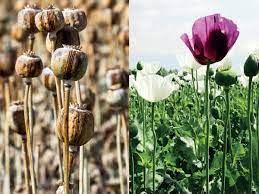Free Courses Sale ends Soon, Get It Now


Free Courses Sale ends Soon, Get It Now



Disclaimer: Copyright infringement not intended.
Context
Since when has opium been grown in India?
What is the process of growing and processing opium in India?
What is opium used for?
How does the involvement of private players help?
https://indianexpress.com/article/explained/india-opium-production-regulation-bajaj-healthcare-8040545/
© 2024 iasgyan. All right reserved